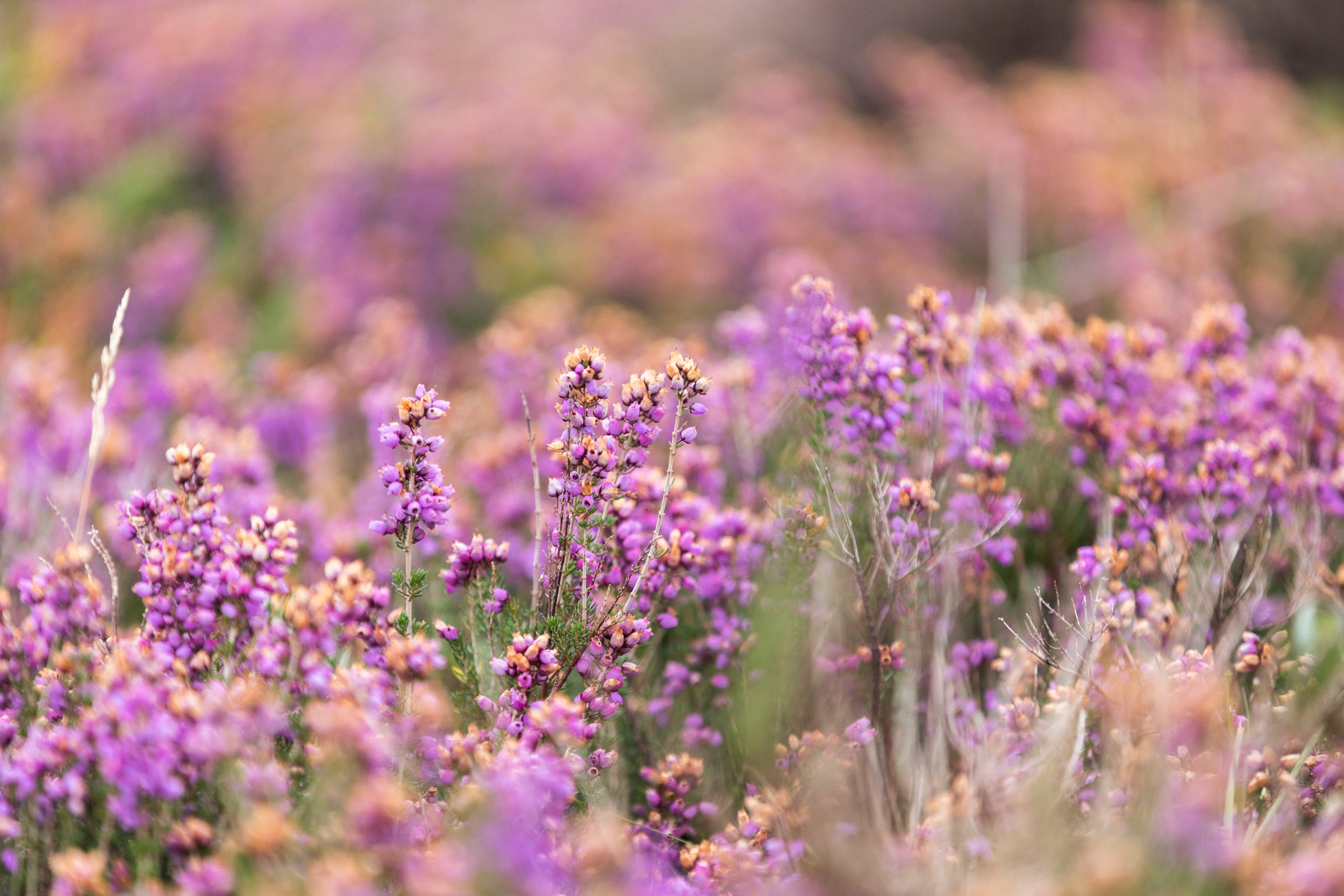Signs of recovery for heathland heather after damage caused by 2022 extreme heat
Dunwich Heath was severely affected by high temperatures two summers ago.

Your support helps us to tell the story
From reproductive rights to climate change to Big Tech, The Independent is on the ground when the story is developing. Whether it's investigating the financials of Elon Musk's pro-Trump PAC or producing our latest documentary, 'The A Word', which shines a light on the American women fighting for reproductive rights, we know how important it is to parse out the facts from the messaging.
At such a critical moment in US history, we need reporters on the ground. Your donation allows us to keep sending journalists to speak to both sides of the story.
The Independent is trusted by Americans across the entire political spectrum. And unlike many other quality news outlets, we choose not to lock Americans out of our reporting and analysis with paywalls. We believe quality journalism should be available to everyone, paid for by those who can afford it.
Your support makes all the difference.Heather that was severely impacted by extreme heat and drought two years ago is showing signs of recovery following a rainy February, blooming in a patchwork of pink and purple at Dunwich Heath.
But the National Trust warned that it is “experiencing first-hand the consequences of more frequent extreme weather events” and called for the Government “to address this significant issue”.
The conservation charity said specialist drone surveys conducted in summer 2023 confirmed a 60% loss in heather at Dunwich Heath on the Suffolk coast following the 2022 heatwave.
However, similar surveys conducted in June of this year indicated that 11% of the damaged heathland heather had sprung back to life following increased rainfall this February.
The rare heathland habitat of Dunwich Heath is nationally important and is home to species including nightjar, woodlark and adders.
Three different types of heather typically grow and flower there from June to September – common, bell and cross-leaved – transforming the landscape into a bright and vibrant patchwork.
But hotter, drier summers are pushing the limits of what the heather can cope with, and the 2022 drought coincided with the middle of the heather flowering season.
The result was that almost the entire heath failed to flower, with some plants also dying.
Where there was significant die-off in the heather, there was also a lower number of insects, particularly pollinators, which provide crucial food for nesting birds.
Resident species such as the Dartford warbler depend on reliable food sources year-round, with numbers dropping from 30 breeding pairs to just under 20 from 2022 to 2023.
However, rangers believe the wettest February on record in East Anglia has contributed to encouraging signs of recovery for the heather this year.
Sam Cooper, National Trust area ranger at Dunwich Heath, said: “Results from the recent drone survey have confirmed that just over half of the heathland is now made up of live heather.
“This time last summer, it was down to 40%, so it’s really encouraging.
“The wet start to the year has certainly helped, and we’ll be continuing to monitor how the weather impacts not just the heather itself, but the birds and other wildlife that depend on it.”
Every year, during the autumn and winter months, small areas of heather are cut to encourage new growth and this creates a mosaic of heather of different ages helping to produce a more diverse habitat for a range of wildlife.
The conservation team has started trials to help establish the quickest method to restore the heather.
Ben McCarthy, head of nature conservation and restoration ecology at the National Trust, said: “As the UK’s largest conservation charity we are experiencing first-hand the consequences of more frequent extreme weather events, such as the prolonged period of drought that severely impacted the heath at Dunwich.
“Many rare wildlife and plant species rely on this and other habitats threatened by our changing climate, this is why one of our priority asks for the new Government is to address this significant issue to help ensure generations for years to come can enjoy the nature, beauty and history of this country and sights such as carpets of purple heather are not lost.”